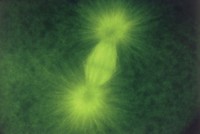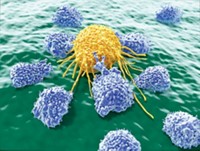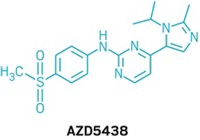Advertisement
Grab your lab coat. Let's get started
Welcome!
Welcome!
Create an account below to get 6 C&EN articles per month, receive newsletters and more - all free.
It seems this is your first time logging in online. Please enter the following information to continue.
As an ACS member you automatically get access to this site. All we need is few more details to create your reading experience.
Not you? Sign in with a different account.
Not you? Sign in with a different account.
ERROR 1
ERROR 1
ERROR 2
ERROR 2
ERROR 2
ERROR 2
ERROR 2
Password and Confirm password must match.
If you have an ACS member number, please enter it here so we can link this account to your membership. (optional)
ERROR 2
ACS values your privacy. By submitting your information, you are gaining access to C&EN and subscribing to our weekly newsletter. We use the information you provide to make your reading experience better, and we will never sell your data to third party members.
Biological Chemistry
Two New Mechanisms Found For Disputed Anticancer Agent
Oncology: ONC201, also called TIC10, works by inducing stress responses, in addition to original mechanism
by Stu Borman
February 26, 2016
| A version of this story appeared in
Volume 94, Issue 8
Researchers find that ONC201, formerly known as TIC10, an anticancer agent whose patent is in dispute (C&EN, May 26, 2014, page 7), has additional mechanisms of action besides the one that led to its discovery. ONC201 was identified in a screen for compounds that kill cancer cells selectively by boosting expression of a gene called TRAIL (Sci. Transl. Med. 2013, DOI: 10.1126/scitranslmed.3004828). Oncoceutics, which originally patented it with the wrong chemical structure, is studying the drug in clinical trials for various cancers. Scripps Research Institute California, which discovered the error and applied for a patent on the correct structure, continues to pursue its claim. Now, Wafik S. El-Deiry of Penn State College of Medicine and R. Eric Davis and Michael Andreeff of the University of Texas MD Anderson Cancer Center and coworkers find that ONC201 also has two other mechanisms that cause cancer cells to self-destruct (Sci. Signal. 2016, DOI: 10.1126/scisignal.aac4374 and 10.1126/scisignal.aac4380). The mechanisms differ in solid tumors and blood cancers, but both boost cellular stress responses by increasing expression of the transcription factor AT4. The findings could aid clinical development of the drug, regardless of how the dispute is settled.





Join the conversation
Contact the reporter
Submit a Letter to the Editor for publication
Engage with us on Twitter